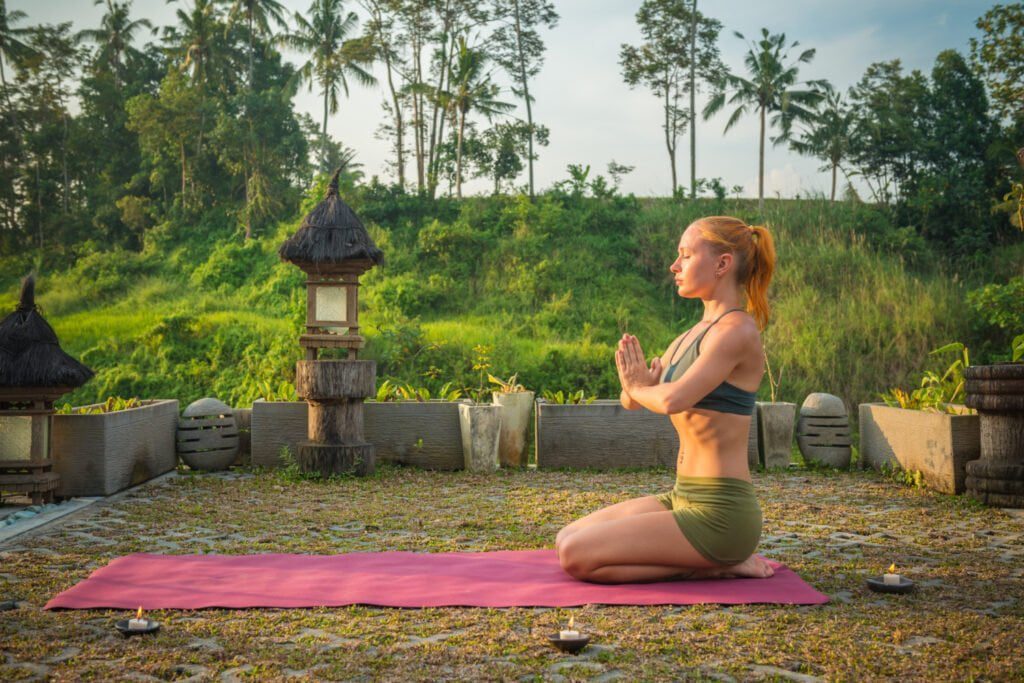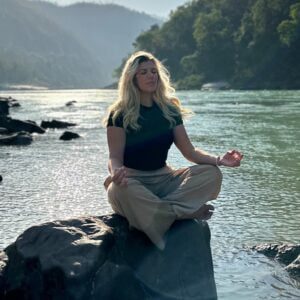Yoga, an ancient practice that originated in India more than 3,000 years ago, helps us connect the mind and body through breathing, movement and meditation. The practice has many benefits for physical and mental health, from increasing flexibility, strength and balance, to reducing stress and anxiety levels, including during cancer treatment. Cancer patients who practice yoga regularly find that their quality of life and the complications of their emotional and physical state improve, and they are able to face the diagnosis and treatments with more physical and mental strength.
Yoga has the ability to reduce the psychological stress caused by the diagnosis itself, in addition to helping to manage the physical symptoms and side effects of treatment.
Benefits of practicing yoga during cancer treatment.
1. Stress reduction.

Cancer and its treatment can generate stress, and this can worsen the side effects of the treatment and can help reduce stress, anxiety and depression, as well as fear, leading to a feeling of relaxation with the final meditation.
2. Improved fitness.
Cancer treatment can cause fatigue, weakness and decreased mobility, and with practice you can improve physical function and increase flexibility, strength and balance.
3. Pain relief.
Cancer and its treatment can cause pain. Some studies suggest that it may help relieve pain, especially in breast cancer patients.
4. Improved sleep.

Cancer treatment can alter sleep patterns, and poor sleep can worsen other symptoms, relaxation and meditation can help improve sleep quality and promote better rest.
5. Strengthening the immune system.
Cancer treatment can weaken the immune system, making people more prone to infections. The practice can help strengthen the immune system, promoting overall health and well-being.
6. Strengthens bones, muscles and the cardiovascular system.
With treatments to cure cancer, cellular tissues weaken and there is a risk of osteoporosis and heart rhythm disturbances that can be prevented and improved with practice.
7. Helps increase empowerment and well-being.
With oncological treatments, people feel sad, lost and without self-esteem, a regular practice of classes with other people with cancer helps to avoid this.
8. Keeps the spine strong and improves posture.
In yoga everything is spine work, and patients can see how their posture improves and back pain is reduced.
9. Improves lymphatic circulation to strengthen the immune system, prevent and control lymphedema.
Which is one of the complications of some types of tumors such as breast tumors, due to removal of the lymph nodes in the armpit. The postures or asanas help improve the mobility of the arms, in addition to working the lymphatic system in a gentle and effective way.
10. Relieves fatigue related to cancer treatment.
chemotherapy and radiotherapy produce tiredness and exhaustion that can be improved with the practice of a gentle, yin or restorative class.
What science says about the benefits of yoga in cancer treatment?
In 2006, a study on yoga was conducted at the University of Texas MD Anderson Cancer Center, with 61 women who were receiving 6 weeks of radiation treatment for breast cancer. Half of the women practiced it twice a week, while the rest of the women did not.(1)
Women who practiced yoga reported having more energy, less sleep, better physical functioning, and an overall better quality of life.
Yoga is a great option because it is affordable, non-invasive, and can be tailored to the patient’s needs. It can also serve as a transition to more intense workouts when you begin exercising after treatment.
8 Yoga poses for cancer.
Yoga has been proven to be a beneficial practice for individuals going through cancer treatment or in remission. It can help alleviate physical and emotional discomfort, increase flexibility and strength, reduce stress, and promote overall well-being. Here are 8 yoga poses specifically designed to support those affected by cancer:
1. Mountain Pose (Tadasana).
This foundational pose promotes balance and stability, helping individuals regain their strength and confidence during their cancer journey.
2. Warrior II (Virabhadrasana II).
This empowering pose strengthens the legs, opens the chest and shoulders, and enhances focus and determination.
3. Child’s Pose (Balasana).
This gentle resting pose allows for deep relaxation, helps release tension in the back and hips, and encourages a sense of surrender and calm.
4. Cat-Cow Pose (Marjaryasana-Bitilasana).
This dynamic sequence gently stretches the spine, improves flexibility, and massages the internal organs, promoting digestion and detoxification.
5. Bridge Pose (Setu Bandhasana).
This pose strengthens the back, hips, and legs, while opening the heart and chest. It also stimulates the thyroid gland, which can be affected during cancer treatment.
6. Seated Forward Bend (Paschimottanasana).
This pose stretches the entire back of the body, including the spine, hamstrings, and calves. It can help relieve anxiety and promote relaxation.
7. Tree Pose (Vrikshasana).
This grounding pose improves balance, focus, and stability. It also strengthens the legs and core muscles while promoting a sense of inner strength and resilience.
8. Corpse Pose (Savasana).
This final relaxation pose allows the body to fully rest and rejuvenate. It promotes deep relaxation, reduces stress and anxiety, and helps restore energy levels.
Remember, it’s crucial to consult with a qualified yoga instructor or healthcare professional before starting any new exercise routine, especially during cancer treatment. They can provide personalized guidance and adjustments to ensure a safe and effective practice.
Important.
It is important to note that people with cancer should consult their team of medical specialists before beginning a yoga practice, and work with qualified teachers who have experience working with cancer patients. It is also important to adapt the practice to accommodate any physical limitations or side effects of the treatment.
People with cancer should be aware of any physical limitations they may have to know what practice is best for them. If it has not been practiced before, it is preferable to start in a specific class for people undergoing cancer treatment, where doubts can be asked and postures adapted to each situation.
Once it has been learned, it can be done in the comfort of home. Breathing techniques and exercises can be done virtually anywhere.
Bottom Line.
Practicing yoga during cancer treatment offers a wide range of benefits for both the body and mind. It helps alleviate various physical symptoms such as pain, fatigue, and stiffness, while also promoting overall strength, flexibility, and balance. Additionally, yoga provides a therapeutic outlet for emotional and psychological well-being, reducing stress, anxiety, and depression. It encourages mindfulness, self-compassion, and a sense of empowerment, enhancing the quality of life for cancer patients. With its gentle yet effective approach, yoga proves to be a valuable complementary therapy that supports the healing process and contributes to a better overall outcome for those facing cancer.
+1 Source
FitToFar has strict sourcing guidelines and relies on peer-reviewed studies, educational research institutes, and medical organizations. We avoid using tertiary references. You can learn more about how we ensure our content is accurate and up-to-date by reading our editorial policy.
- Review of Yoga Therapy During Cancer Treatment; https://www.ncbi.nlm.nih.gov/pmc/articles/PMC5777241/

 Workout
Workout
 Meditation
Meditation





 Contact Us
Contact Us












